Indian cinema and the BFI National Archive
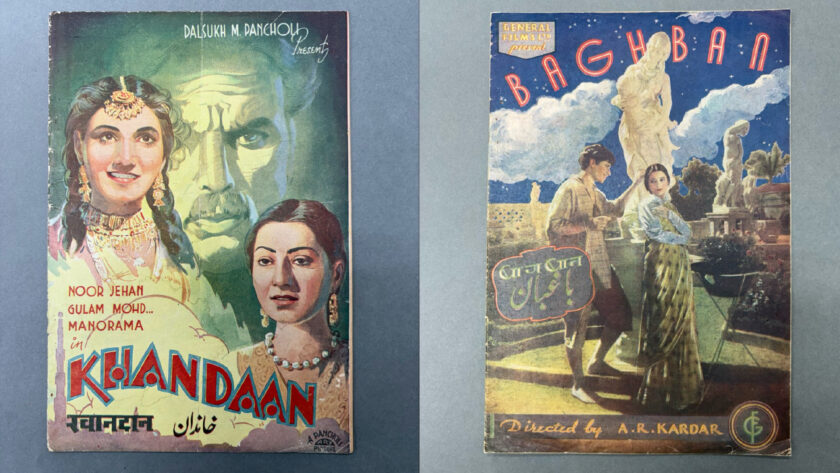
To align with the 16th edition of the annual London Indian Film Festival, I thought it would be a good idea to highlight the presence of Indian cinema in the BFI National Archive’s Screencraft Collections. The paper side of the BFI National Archive already holds a large number of posters from Indian films but, more recently, I have been working on cataloguing a collection of Indian song booklets.
Song booklets are promotional items that are unique to the Indian cinema landscape. They contain a synopsis of the film, cast lists, along with lyrics of songs in several regional languages (such as Gujarati, Hindi, and Urdu), so that audiences could follow the plot of the film, and sing along to the song numbers. These items were popular throughout the 20th century and, as such, the collection we hold includes song booklets dating from the 1930s all the way through to the 1990s. They are beautiful examples of graphic design from the industry and provide insight into the demographics and interests of moviegoers in India from across the 20thcentury.
I am currently working on the song booklets from the 1930s, 1940s, and 1950s which have included booklets for films from influential directors such as Mehboob Khan and Debaki Bose, and booklets for films featuring Bollywood icons such as Devika Rani, Nargis Dutt, and Suraiya.
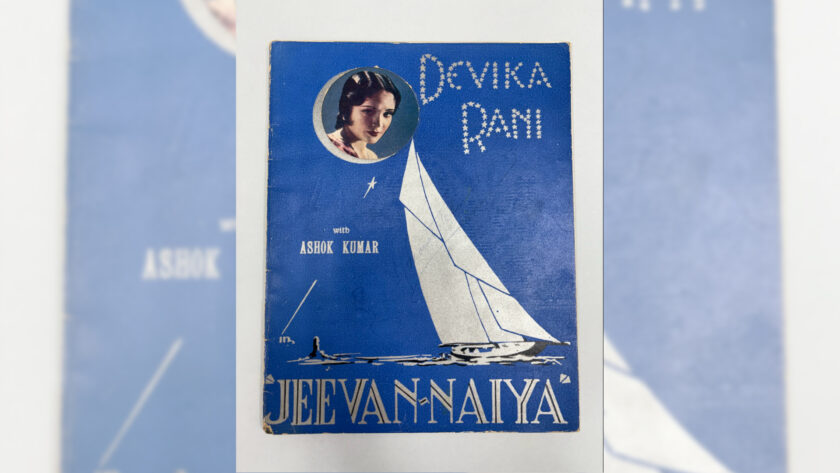
Cataloguing this collection has been a really engaging process, as discerning even simple information about the booklets (such as a date of production) can be a little difficult. Many films from the 1930s and 1940s are remakes, with many silent films remade as ‘talkies’, or ‘talkies’ reimagined in different languages, sometimes under the same production company and director. Additionally, several of the films have very little information about them available online, so researching them can be a challenge. I’ve found that cross-referencing a wide variety of sources, such as fan blogs, published volumes on Indian cinema, and academic papers, has been immensely helpful in finding the correct contextual information during the cataloguing process.
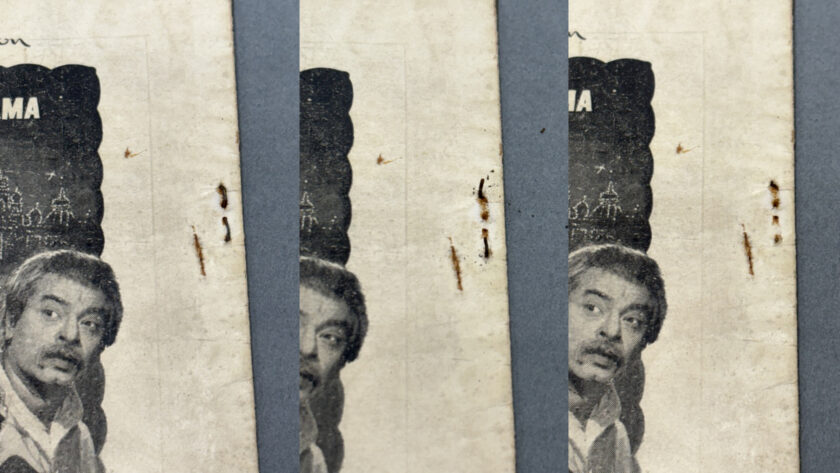
In addition to cataloguing, I am also rehousing these objects and doing some basic preservation on the booklets to ensure that their lifespan is as long as possible. Enter the menace to all archivists – the staple.
Staples are great at fastening papers together but, from a preservation perspective, they can cause several problems. When metal is in contact with paper, it accelerates the natural oxidation process that happens to all paper over time, weakening it and causing yellowing. Additionally, if a staple becomes rusty, the rust corrodes the paper and physically eats away at it. Prior to their preservation in the BFI National Archive, many of the booklets had been stapled along the spine to hold them together, causing damage. As such, I am working through the booklets in batches, removing staples, and cleaning away the surface rust left behind by them. Some of the booklets have also been taped along the spine, and these will require some expert attention from our paper conservator here at the archive to safely remove the adhesive without causing damage.
The end result of this process will be a preserved and catalogued collection of Indian song booklets, accessible to those using our research service, which will be available to view by the end of the 2025. It’s a lovely collection to be working with – they are beautiful objects full of rich contextual information about the Indian film industry through the mid 20th century. If you are interested in booking a research appointment to view these later this year, you can contact us through the ‘Book an appointment’ form on this webpage.
– Jesse Woodd, Archives Assistant (Screencraft)
OSH at the Creative Nonfiction Film Weekend
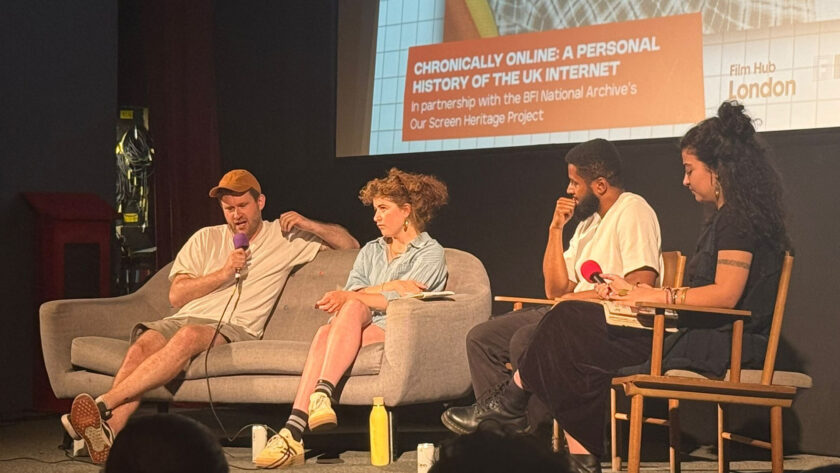
Between the 4-6 July 2025, nonfiction fans descended on the Rio Cinema in Dalston for the Creative Nonfiction Film Weekend (CNFW), three days of screenings and on-stage discussions of unconventional and innovative documentary.
Only the second edition of the festival, this time the focus was ‘personal documentary,’ a carefully curated weekend exploring all the wildly different ways that a film can be personal, bringing a community of filmmakers and cinephiles together to investigate the subjectivity of reality.
I was approached earlier in the year by Orla Smith, one of the directors of the festival, as they were keen to include a programme of online video, and wanted to know if the BFI National Archive – and specifically Our Screen Heritage (OSH), with its focus on collecting online moving image – could get involved. I’d spoken with Orla previously about the contemporary collecting strand of OSH (which is supported by National Lottery via the BFI Screen Heritage Fund) and something had clearly sparked with her: playing with the context in which online works are experienced, and how this might change how we think about them. So, in partnership with OSH, Orla, her co-director Kimia Ipakchi, and a host of guest curators put together a programme titled ‘Chronically Online: A Personal History of the UK Internet’. It ran the gamut of online moving image, from lads hitting each other with chairs to Salad Fingers to Mixie and Munchie, all presented on the big screen, to an audience of around 100 people.
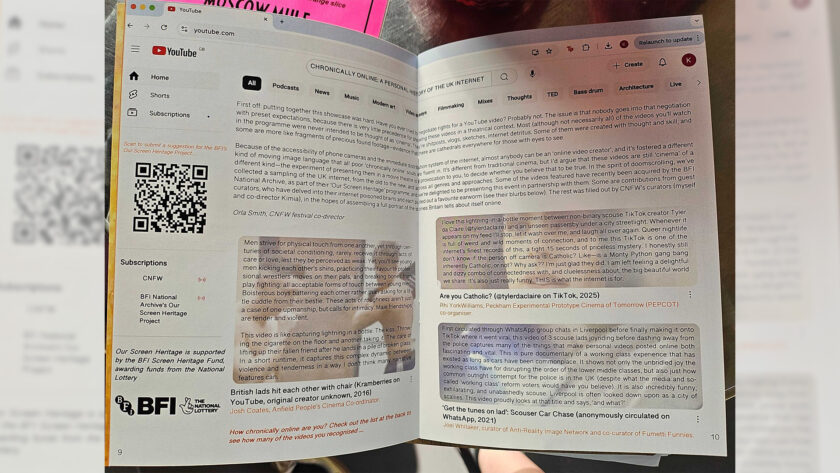
The works selected showed each curator’s own experience with online moving image, but Orla and Kimia were keen to underline the fact that this was an area now being actively preserved at scale by the BFI (thank you very much Orla and Kimia!). Their research process involved digging into the online moving image collection at the BFI Mediatheque, in order to include work that we have already acquired, and they also promoted our public call out, where we have asked people to submit their own suggestions of works we should investigate.
I was also invited to be part of the post-screening panel, where I was joined by Paul Weedon of I can’t believe you’ve done this (but also so much more), and Tyrell Williams, a filmmaker and one of the creators of #HoodDocumentary. They both spoke to their own histories as both creators and consumers of online moving image, the opportunities (and challenges) the online world had offered them, creativity, community and what it means when the work becomes separate from the maker. I was there to speak to the work of researching, curating and archiving this material, the stories it tells and the stories we shape around it, and did my best to do justice to the incredible work our curators working on acquisition have been doing.
We had the opening night slot, and from where I was sitting it was an absolute delight. Audience engagement with the work on screen, the conversation on stage and afterwards, and seeing our dear old QR code on the pillars at the Rio felt like a great way to delve into the work the archive does to collect stories, from across all forms of moving image-making. Thank you to Orla and Kimia and the whole CNFW team, and to BFI colleagues for all the work that has gone into Our Screen Heritage so far (not long left!!).
The full programme, for those interested (though quite a different experience to see them on a cinema screen, with an audience):
- #HoodDocumentary [Episode 1] – Tyrell Williams, Kayode Ewumi
- Cows and Cows and Cows – Cyriak
- I can’t believe you’ve done this – Paul Weedon
- Are you Catholic? – @tylerdaclaire
- Gay Britain – Bruno Powroznik
- British lads hit each other with chair [original creator unknown]
- Are You Heterosexual – Bruno Powroznik
- “Get the tunes on lad” Scouser car chase [circulated anonymously on whatsapp]
- Salad Fingers 2: Friends – David Firth
- What I Do All Week 5 – @itsbrandiece
- #22 #47 – Mixie and Munchie
- I quit my London bus driver job to start a business [now I’m scared] – Mr. Tasar
- Britain’s Got Talent comes to Scotland – Limmy
- Boom and bust – Bruno Powroznik
- The Nick Clegg Apology Song
– Kitty Robertson, Assistant Curator
Object lessons
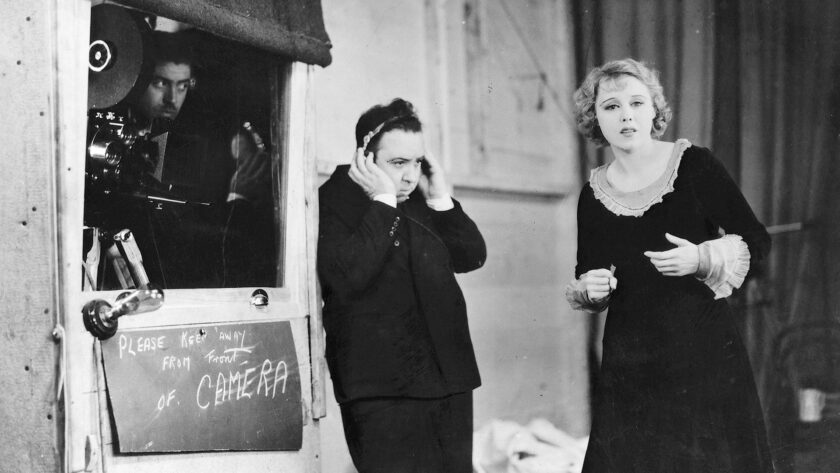
Our Object of the Week series is already four weeks old(!) and we’ve surfaced some great stories so far.
Wallpaper inspired by Powell and Pressburger’s The Red Shoes; a publicity still for lost silent rom-com Swim Girl, Swim; a list of diabolical doctors compiled by Peter Wollen – it’s great to have a platform where we can showcase the rich variety of items and stories that can be surfaced from our collections.
This week, we shine a spotlight on some 96-year-old footage of Alfred Hitchcock, recording a test take for his 1929 thriller Blackmail. Have a read here and keep your eyes peeled for more outstanding objects over the weeks and months to come.
– Alex Prideaux, Marketing and Events Manager (Our Screen Heritage)
The Inside the Archive blog is supported by the BFI Screen Heritage Fund, awarding National Lottery funding.
